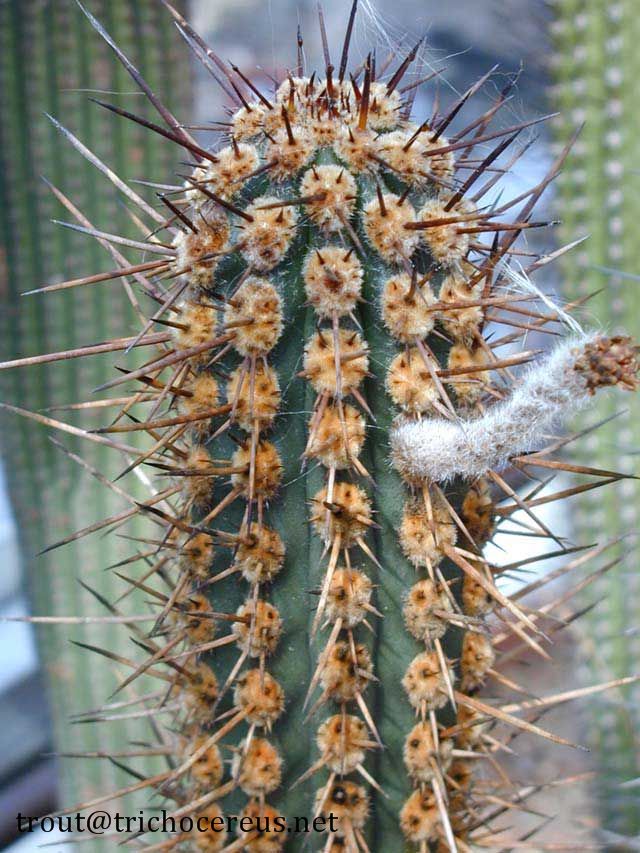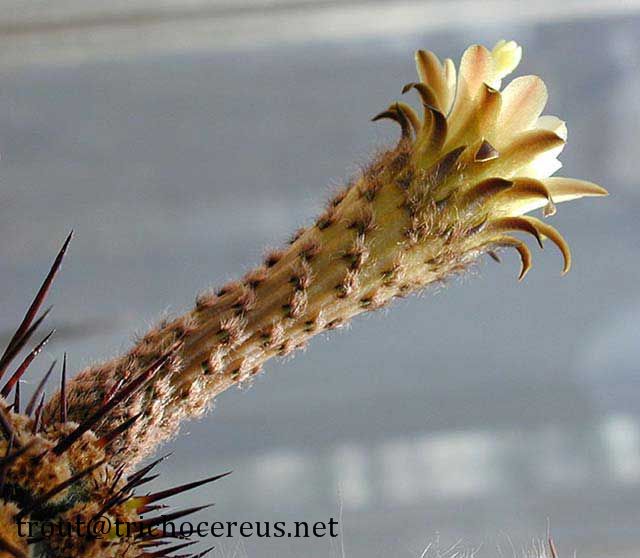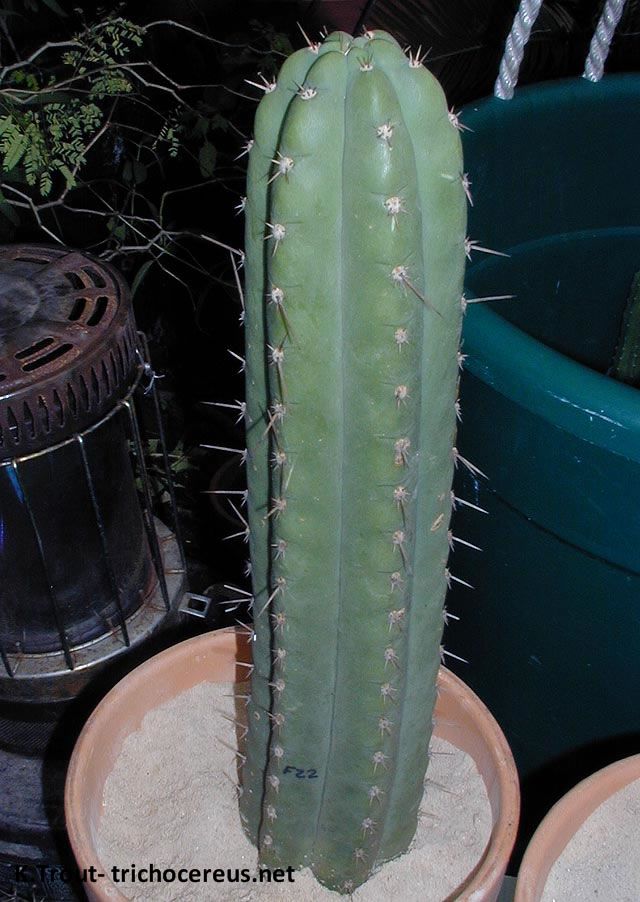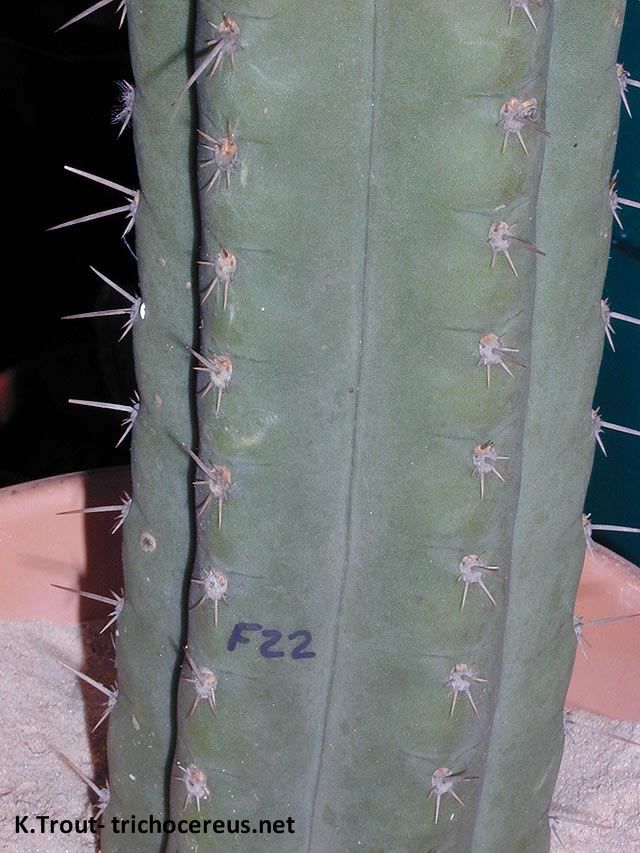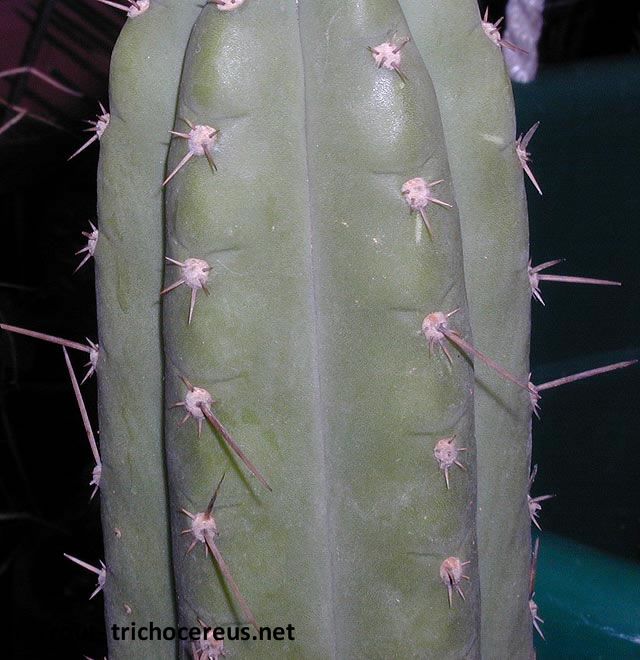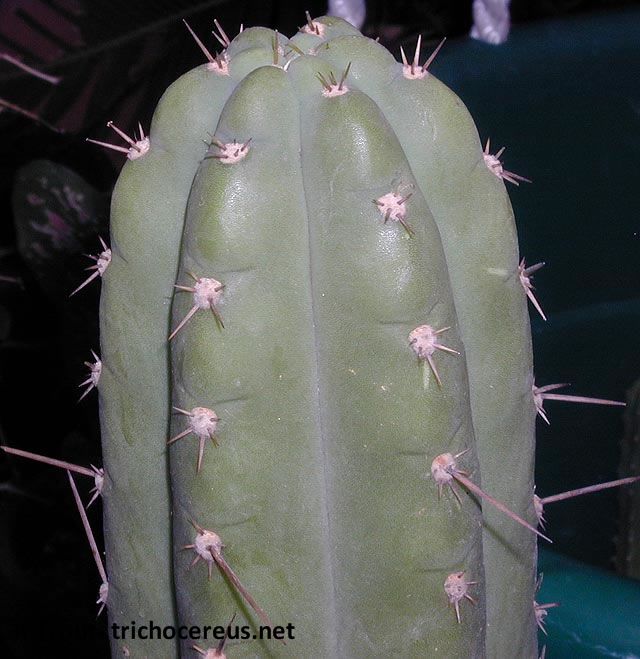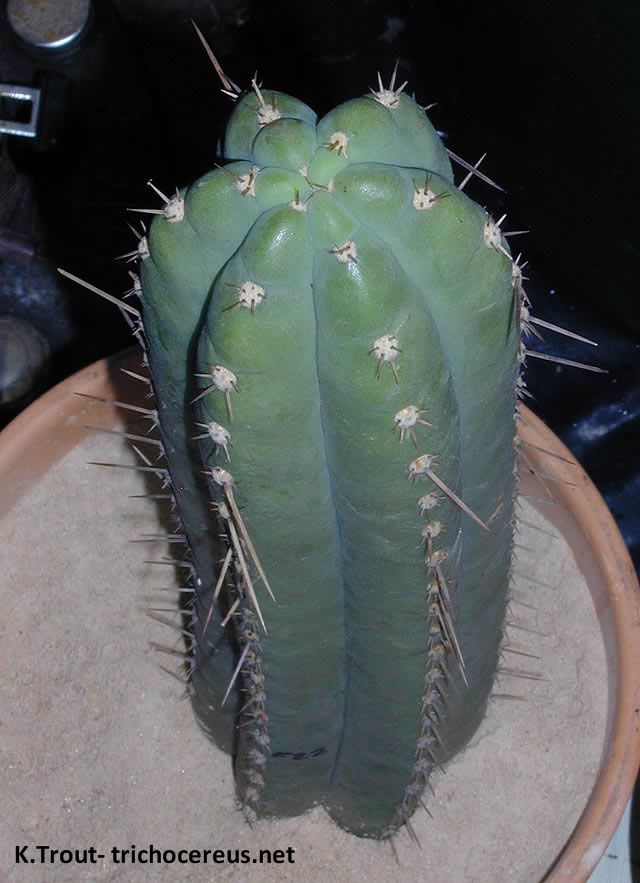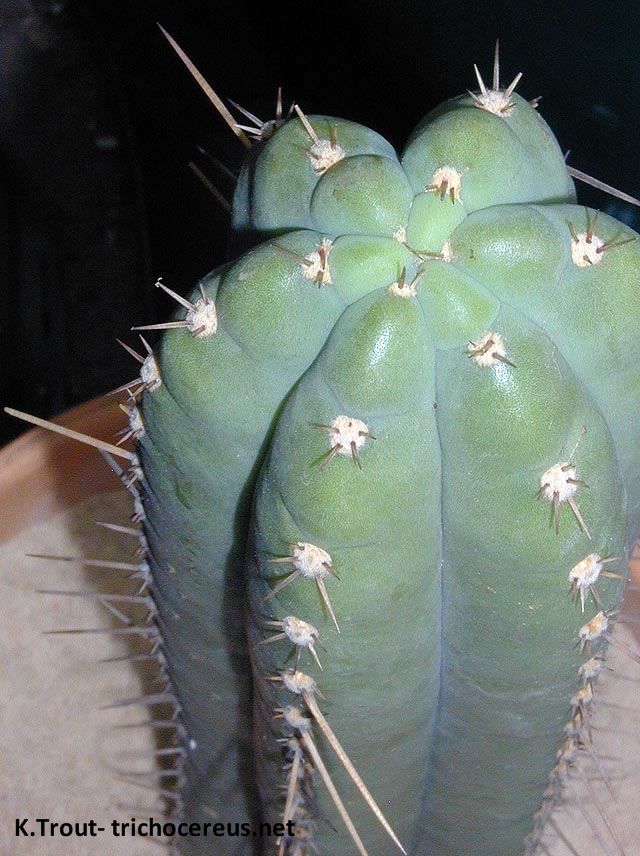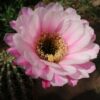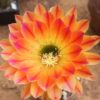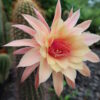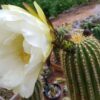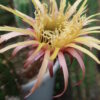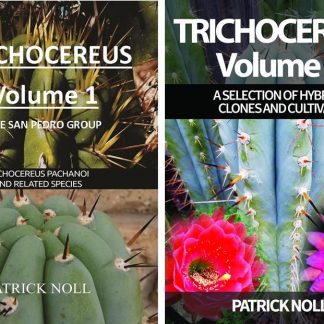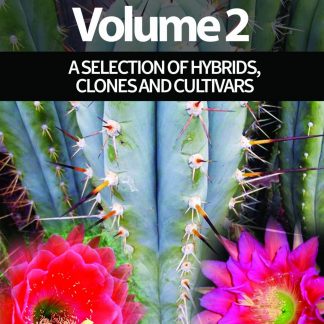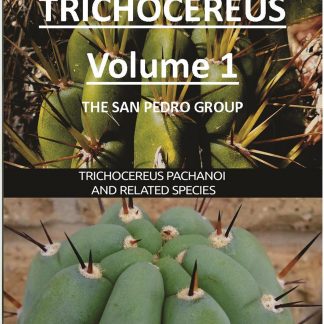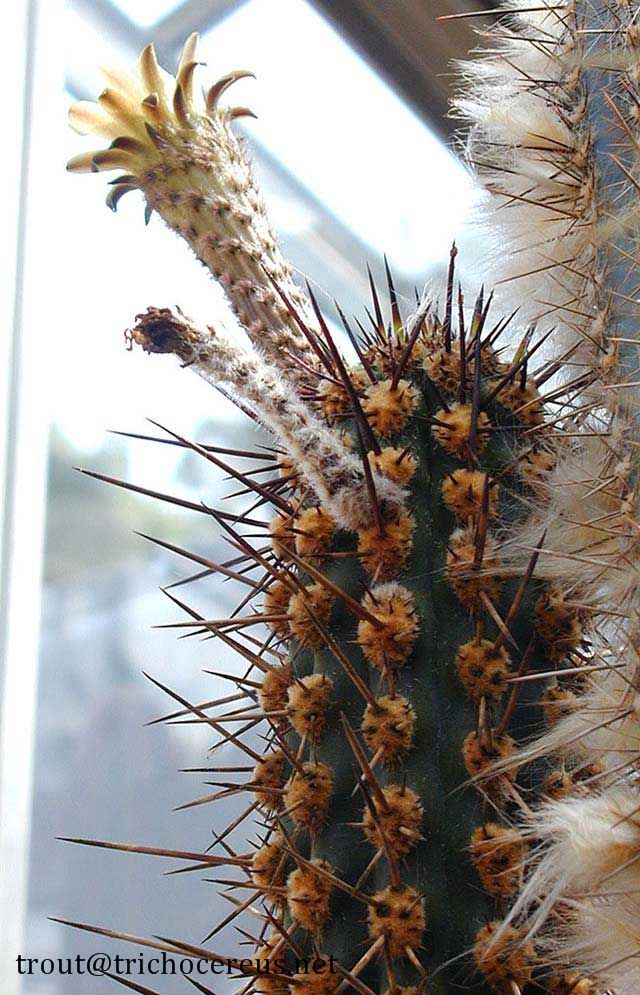
Trichocereus cephalomcarostibas, also known as Echinopsis cephalomacrostibas, is a columnar cactus that was described as a Trichocereus species by Curt Backeberg and Werner Rauh. However, the plant in question later turned out as a Weberbauerocereus and the flower makes it pretty obvious that Echinopsis cephalomacrostibas is not a Trichocereus.
The currently valid name of this species is Echinopsis cephalomacrostibas, but most authors went on to treat it as an incorrect species or move it to Weberbauerocereus as Weberbauerocereus cephalomacrostibas.
The original description of Trichocereus cephalomacrostibas
The original description was published by Backeberg and Werdermann in the book NEUE KAKTEEN, which is German for NEW CACTI. The book was released in 1931. The original description described a plant that was then called cereus cephalomacrostibas. Most plants that are now part of the genus Trichocereus were treated as Cereus at the time, which is why the name wasn’t surprising.
Trichocereus cephalomacrostibas, also known as Echinopsis cephalomacrostibas, gets 1,5 – 2 meters tall and pups have a maximum diameter of 8-12 centimeters. The areoles are very close to each other, which is even more obvious on older plants later on. The areoles are between 1-2 centimeters in diameter and the plant is very spiny. It has up to 20 small radial spines and between 1-3 middle spines that can be up to 14 centimeters long. The spines are dark brown to red brown (old growth gray). It´s noteworthy that the original flower from the Backeberg description only had a size of 12 cm (which would fit here), but was said to have scales on the flower. Besides, it was supposed to be white instead of this cream or beige color.
Origin: South peru, near Mollendo.
Pics in this Post courtesy of: htpp://troutsnotes.com
dermann´s CEREUS CEPHALOMACROSTIBAS.
Please note that there also is a plant called KK1421 Trichocereus cephalomacrostibas that has nothing to do with this plant anmd, that probably grew on the same site and was confused with a Trichocereus.
KK1421 Trichocereus cephalomacrostibas cv. Rio Tambo
This field collected Trichocereus cephalomacrostibas / Echinopsis cephalomacrostibas is fairly interesting though it probably has nothing in common with the species that it is supposed to be part of. Knize collected this nice strain near the Rio Tambo in Peru. It almost looks like a spiny Trichocereus pachanoi strain and should definitely be investigated some more.
All those photos are courtesy of Troutsnotes.com
If you compare those two plants to the plant that was originally described as Trichocereus cephalomacrostibas, it gets obvious that they are all different plants. The plant in the link was actually a Weberbauerocereus. The seed and the flower are so unlike the ones on any other Trichocereus that it´s absolutely obvious that it’s not a Trichocereus. But that’s a different story. The original Trichocereus cephalomacrostibas (you know, the one from the link, which actually is a Weberbauerocereus) is said to grow east of Mollendo in the Department Arequipa and occurs from Chala to the Rio Tambo in the south. And that’s where KK1421 is said to originate from. Rio Tambo.
Case of mistaken identity ?
Just because there are Trichos near the Rio Tambo, it does not make em automatically the same population of this Trichocereus cephalomacrostibas from the description. That´s not Ill will but just the flaws of this particular labeling system. It´s just natural that you can sometimes find a couple of different plants growing at the same area. And because of that, seed collectors should give every single collection (instead of just the whole collection site) a unique number, so you can easier track them down and see which ones would fit in the descriptions and which ones don´t.
Alright, what does that say about those two different plants labeled as KK1421. Well, very little. Both are interesting Trichocereus and while one of them is definitely a cuzcoensis relative, the other one needs further investigation.
Another KK1421 Trichocereus cephalomacrostibas
The original description goes like this:
Cereus cephalomacrostibas grows in packed groups of columnar cacti that get up to 2 meters tall. They are up to 10 cm thick, a gray-green color, tightly packed areoles, 3 – 6 radial spines and 3 middle spines. The flower is 12 cm long (which is too small for a Trichocereus flower), white, covered with white wool and scales. This original plant occurs in South Peru, above Mollendo.
Now back to KK1421: The Seeds came from Karel Knize and were originally collected from Matarani, Peru at 300m altitude. Knize´s plant obviously comes from the group around Tr. cuzcoensis but it´s difficult to know if this is actually the same plant as Backeberg described as I lack a pic of the flower. What I can say is that 12 cm would be very small of a Trichocereus flower. And there are pics showing a type of Weberbauerocereus, which most believe is THE original Tr. cephalomacrostibas. Mr. Knize´s plant is 100% sure NOT a weberbauerocereus.
Where to buy seeds of KK1421: I actually have some in my shop every now and then. Check it out here: trichocereus.net/shop . This article is an excerpt from my book KAREL KNIZE TRICHOCEREUS FIELD GUIDE.
Pictures provided from Troutsnotes.com!

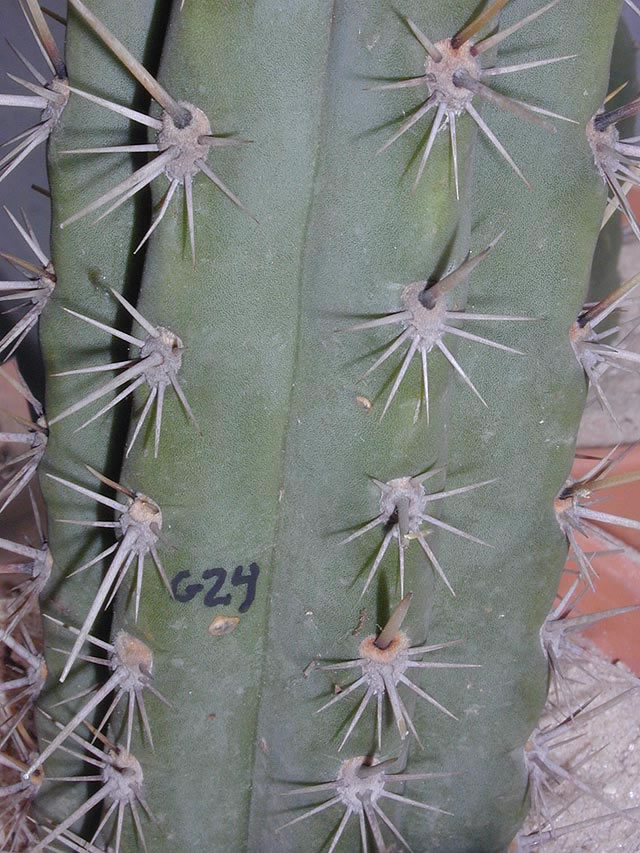
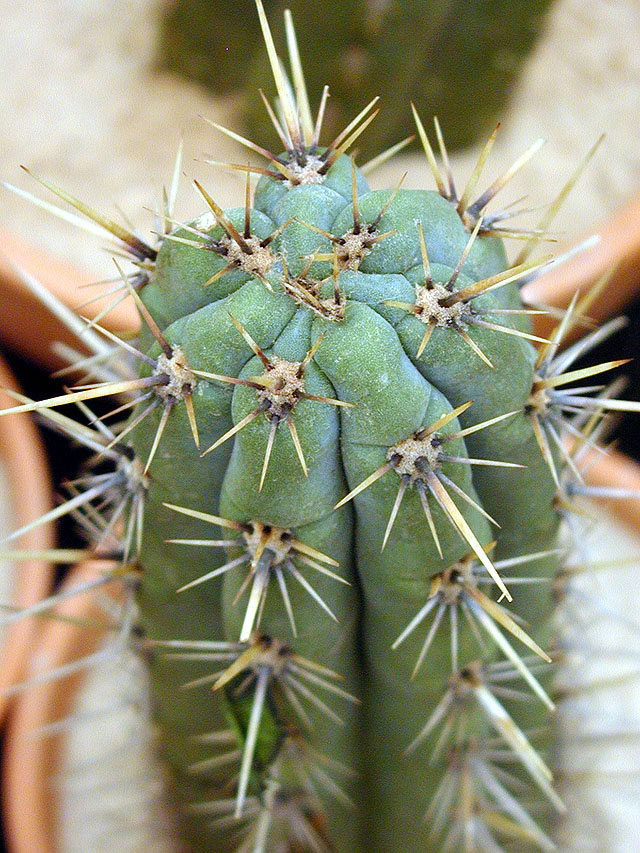
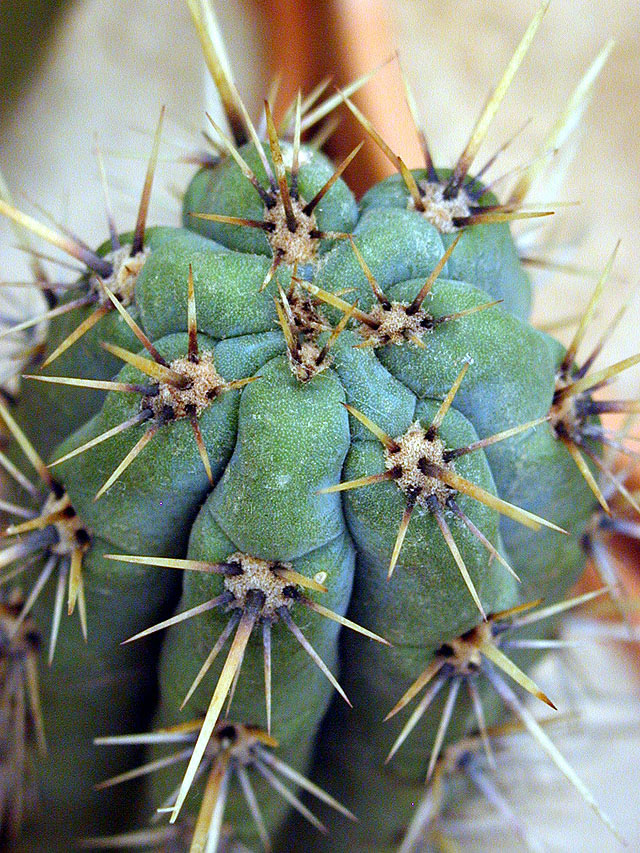
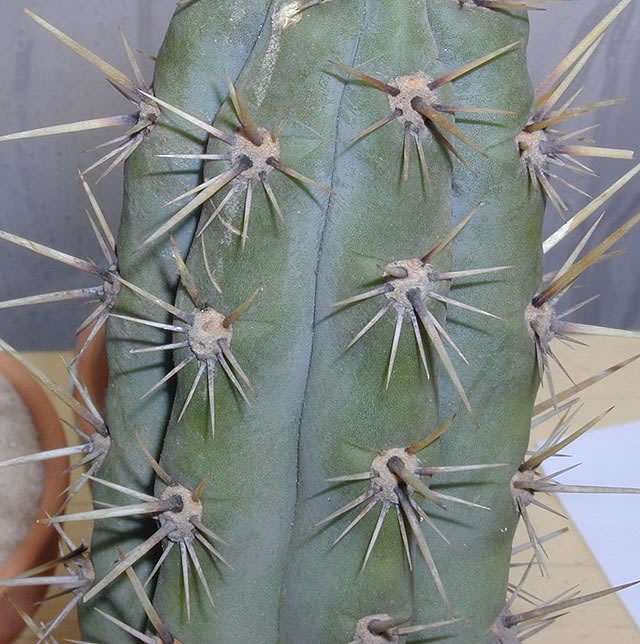
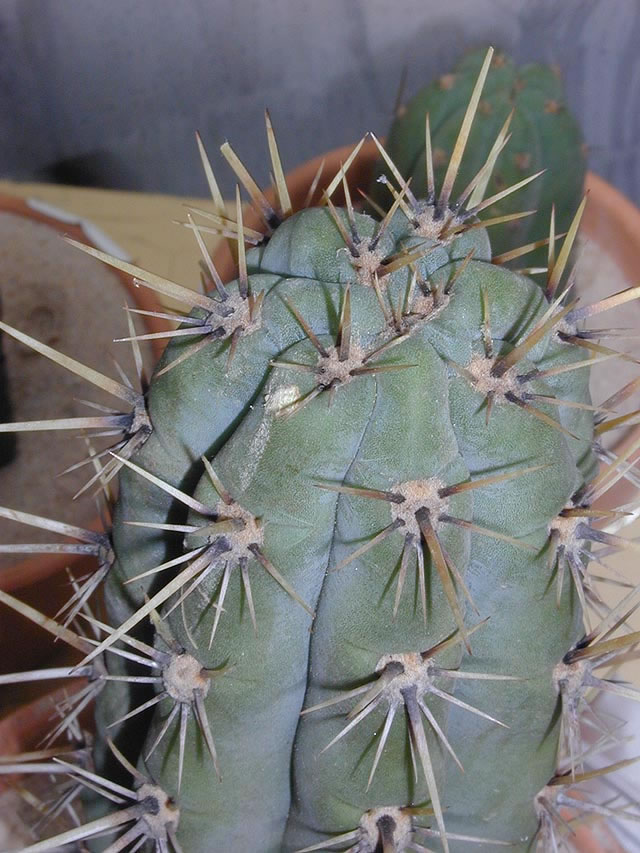
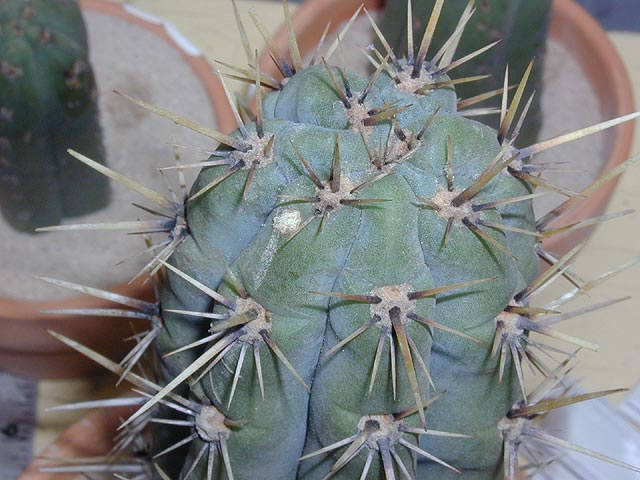
If you digg the things we do, please consider supporting us. We have an amazing Trichocereus Facebook group, and you can also find us on sites like Reddit or Instagram.
Check out our main plant database pages for Trichocereus pachanoi aka Echinopsis pachanoi here:
And Trichocereus bridgesii here:
Also have a look at some of the other articles in our Trichocereus database. For example Trichocereus PC or Trichocereus macrogonus.

